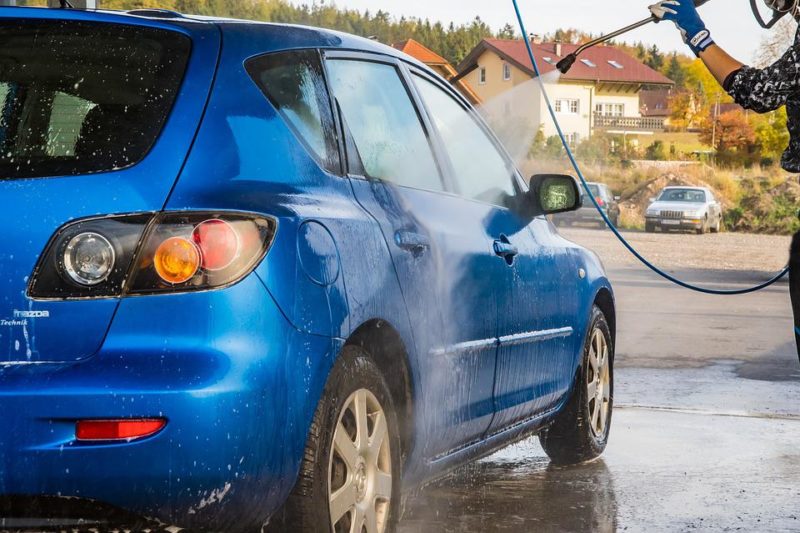Are you wondering how to fix a seized pressure washer engine? Follow the step-by-step process of disconnecting the accessories, equalizing the pressure, removing the valve covers, turning the crankshaft, and assembling it again.
Remember that the vehicle that sits up idle demands getting it up and running again.
But more than that, the engine can seize because of no oil or running on low, succumbing to the broken timing belt, or overheating; paying attention to these conditions stops, and calls for professional technicians to restore function. But if the engine stops because of a rusted cylinder wall, an engine restart is necessary without expert help, as this is just an overview, so you better read this article further!
Understanding First A Seized Pressure Washer Engine
A seized engine results from rusted cylinder walls that develop after the vehicle stays for an extended time with no running. The lubricant coats up, and drains away because of gravity. When you shut the car down, it opens the valves on the cylinders allowing moist air to circulate freely in the air intake. It then progresses toward the cylinder head and causes cylinder wall condensation, rings, and piston surfaces.
Just know when you leave this long enough, the condensation rusts that and causes a seized engine. So, learn how to best fix this problem after suspecting this in your vehicle. The tools required include socket set, screwdrivers, wrench set, and breaker bar, while the materials required include replacement gaskets, penetrating oil, pen and masking tape, and gasket sealant.
Steps To Fix A Seized Pressure Washer Engine
Below are steps to consider how to fix a seized pressure washer engine.
Step #1. Disconnecting the accessories
What drives the many parts outside the engine block is the crankshaft, so disconnect the belt parts and accessories underneath the hood. The water pump, power steering pump, and alternator are parts that increase the drag in a crankshaft. Likewise, disconnecting them lowers the power when dislodging the pistons, allowing the crankshaft to turn.
Step #2. Equalizing the pressure
Utilize a socket when removing spark plugs and handling several wires as they are disconnected altogether. Reconnect the wire back to its original cylinder when you place things back together. Remove the plugs that release any pressure inside the engine, pushing it against you while working on freeing the pistons. But regarding how often you need an engine coolant, it depends on the owner’s manual that you must check out the way to change the engine coolant.
Step #3. Removing the covers in a valve
Utilize the wrench when wanting to loosen the rest of the restraining bolts that hold the cover in a valve in the cylinder head. Get the bodies removed, expose the arms in a rocker, and get the nut removed, keeping the rocker’s arm. Afterward, remove the rocker’s arms, and the pushrods are pulled out of the cylinder head. This step helps reduce the resistance to overcome turning the crankshaft manually.
Step #4. Turning the crankshaft
Search for the engine block front in the transverse engine to one side. Next is the search for the round and harmonic balancer and pulley in the front driving the belt. The center is the bolt head in any of the cases that you must attach the socket fitted on the long handle in a breaker bar of the bolt. Rotate the bolt following a clockwise manner, thus freeing the engine.
Get the pressure washer engine turned after applying the rest of the oil in the cylinder walls and the spark plug wells. Allow the oil to work freely in the piston rings and do it again if it requires some applications after several days. Place the vehicle in the gear after the car is in manual transmission and use this chance to rotate its engine.
Step #5. Assembling the engine again
Work towards assembling the engine again after freeing it and continue replacing the gaskets or seals not covered while opening the things up. Ensure the battery is charged when starting the engine. Avoid damaging the cylinder rust if it’s not possible to turn the engine. Decide whether you will do an overhaul saving the vehicle after. You may also be interested to know about pressure washer troubleshooting.
Some Of The Causes Of A Seized Pressure Washer Engine
Below are the causes of a seized pressure washer engine.
#1. Water accumulation
Water does not compress the same as gasoline, sometimes causes a seized pressure washer engine
#2. Rust accumulation
Rust tends to build up when a vehicle remains unused for a long time; a seized pressure washer engine.
#3. Faulty parts
Faulty parts rarely happen but always are aware of it as it can be due to insufficient maintenance and oil. Look at the engine closely if there’s excess water inside.
It’s A Wrap!
Now you learn how to fix a seized pressure washer engine and understand that it fully develops after the vehicle stays for an extended time with no running and any other issues. Follow the steps also when trying to fix the engine. Bear in mind the causes of the seized engine to avoid the problem the next time! how to clean a wood fence with a pressure washer and how to start a craftsman pressure washer.

